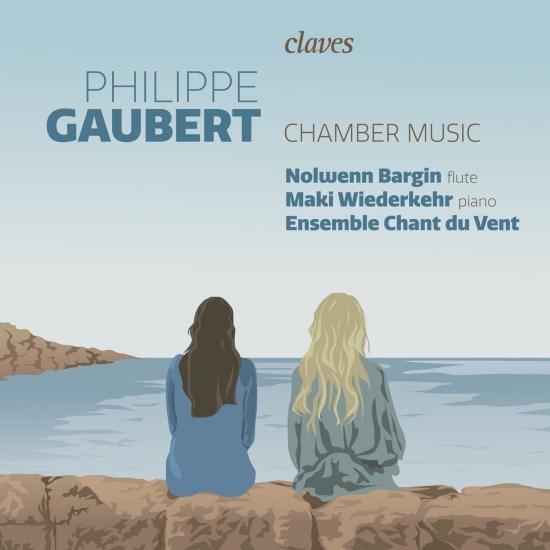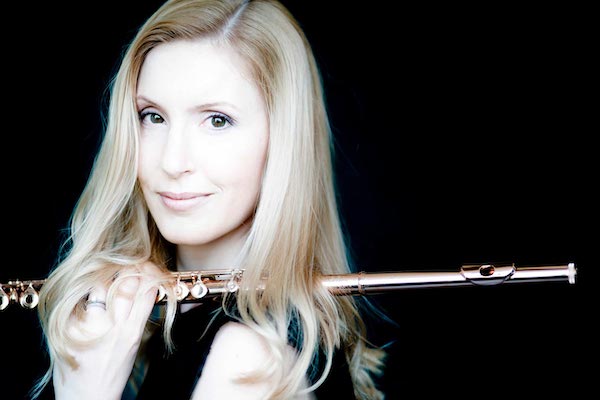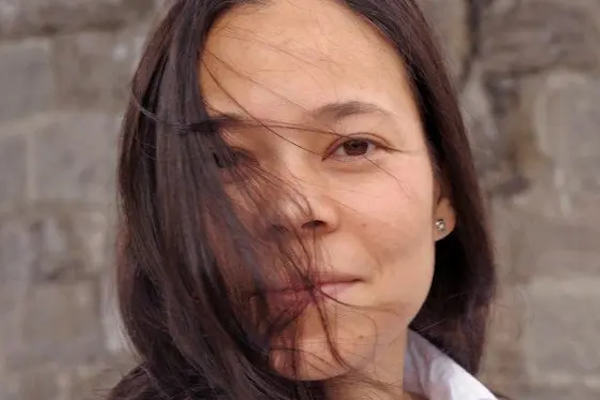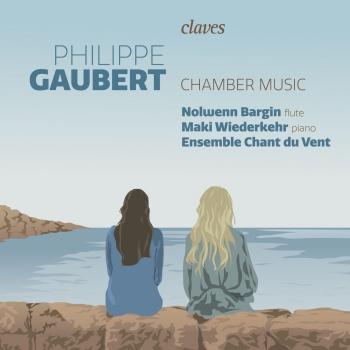
Philippe Gaubert, Chamber Music Nolwenn Bargin, Maki Wiederkehr & Ensemble Chant du Vent
Album info
Album-Release:
2022
HRA-Release:
25.11.2022
Label: Claves Records
Genre: Classical
Subgenre: Chamber Music
Artist: Nolwenn Bargin, Maki Wiederkehr & Ensemble Chant du Vent
Composer: Philippe Gaubert (1879-1941)
Album including Album cover Booklet (PDF)
- Philippe Gaubert (1879 - 1941): Sicilienne pour flûte et piano:
- 1Gaubert: Sicilienne pour flûte et piano02:50
- Fantaisie pour flûte et piano:
- 2Gaubert: Fantaisie pour flûte et piano06:57
- Médailles antiques pour flûte, violon et piano:
- 3Médailles antiques pour flûte, violon et piano: I. Nymphes à la fontaine06:13
- 4Médailles antiques pour flûte, violon et piano: II. Danses04:15
- Philippe Gaubert: Madrigal pour flûte et piano:
- 5Gaubert: Madrigal pour flûte et piano03:46
- Deux Esquisses pour flûte et piano:
- 6Gaubert: Deux Esquisses pour flûte et piano: I. Sur la plaine03:22
- 7Gaubert: Deux Esquisses pour flûte et piano: II. Orientale03:54
- Trois Aquarelles pour flûte, violoncelle et piano:
- 8Trois Aquarelles pour flûte, violoncelle et piano: I. Par un clair matin06:40
- 9Trois Aquarelles pour flûte, violoncelle et piano: II. Soir d’automne04:32
- 10Trois Aquarelles pour flûte, violoncelle et piano: III. Sérénade04:21
- Philippe Gaubert: Ballade pour flûte et piano:
- 11Gaubert: Ballade pour flûte et piano06:52
- Tarantelle pour flûte, hautbois et piano:
- 12Tarantelle pour flûte, hautbois et piano04:29
- Philippe Gaubert: Nocturne et Allegro scherzando pour flûte et piano:
- 13Gaubert: Nocturne et Allegro scherzando pour flûte et piano05:57
- Divertissement Grec pour 2 flûtes et harpe:
- 14Divertissement Grec pour 2 flûtes et harpe03:24
- Philippe Gaubert: Sur l'eau pour flûte et piano:
- 15Gaubert: Sur l'eau pour flûte et piano03:19
- Berceuse pour flûte et piano:
- 16Gaubert: Berceuse pour flûte et piano03:20
Info for Philippe Gaubert, Chamber Music
Those playing the flute may know Philippe Gaubert as co-author of the great Méthode complète de flûte, a standard work even a hundred years after its publication. Those who do not play the flute have in all likelihood never heard of him - yet Gaubert was an outstanding figure in French musical life in his day and is still highly interesting as a composer today.
Those playing the flute may know Philippe Gaubert as co-author of the great Méthode complète de flûte, a standard work even a hundred years after its publication. Those who do not play the flute have in all likelihood never heard of him - yet Gaubert was an outstanding figure in French musical life in his day and is still highly interesting as a composer today.
The eventful life of a multi-talent:
Born in 1879 in the Occitan town of Cahors, Philippe Gaubert moved with his family to Paris as a child, where he received private flute lessons at an early age from the great Paul Taffanel. At the age of fourteen he was officially admitted to the Conservatoire, and at eighteen he became principal flute at the Paris Opéra and an orchestral member of the venerable Société des Concerts du Conservatoire, where he was elected assistant conductor in 1904. In 1905 he ranked second in the Prix de Rome, the composition competition par excellence.
During World War I, Gaubert served as an infantryman, forcing him to put his musical activities aside.
Then, in 1919/20, he was offered three positions almost simultaneously, any one of which would have been enough to secure him a place in musical Parnassus: chief conductor at the Opéra, chief conductor at the Société des Concerts du Conservatoire, and professor for flute at the Conservatoire. Gaubert accepted them all, ending his soloist career at its peak and henceforth acting as one of the most influential figures in the musical life of Paris.
After his sudden death in 1941, obituaries across the country paid tribute to the great conductor and flutist; as a composer, he garnered little attention even at the time. Yet Gaubert’s OEuvre encompasses almost all genres: One constant in his oeuvre is, of course, the flute, which he used in many combinations - only, astonishingly, he never dedicated a solo concerto to it. He also composed a large number of piano and orchestral songs; in later years he also composed a series of major orchestral works, two operas and three great ballets.
His style is characterized by a lyrical quality that always prioritizes the melodic line, coloring it with a rich harmony. As early as 1924, the music journalist Dominique Sordet attested to the “subtlety of expression” of Debussy, the “flowing grace” of Fauré, and “a certain poetic and passionate ardor” peculiar to Gaubert himself. Nolwenn Bargin and her fellow musicians reveal on the present CD the wide spectrum of chamber music that resulted from this.
Gondellied and Nymph Round Dance:
The Sicilienne for flute and piano (1914), initially written for orchestra, is an example of the return to old forms that was in vogue at the time: With its swaying rhythm and simple, songlike melody, Gaubert mimics a Sicilian gondola song.
A virtuoso showpiece, Fantaisie for flute and piano (1912) is inspired by Gabriel Fauré’s 1898 work of the same name. Like the latter, it consists of a slow and a fast part, which demand all the tricks of the flute without tipping over into vain virtuosity. In Gaubert’s case, there is also an exotic introduction and a large cadenza.
Gaubert dedicated his Médailles antiques for flute, violin and piano (1916) to his violinist friend Fernand Luquin, perhaps with a view to a joint performance. Thus the two nymphs, flute and violin, enjoy themselves at the rippling fountain of the piano. And perhaps it is also their round dance, which in the second movement is sometimes elegant, sometimes lively, then again languorous. Gaubert artfully employs the various techniques of the violin - his second instrument - and skillfully plays with the tonal possibilities of the combination of violin and flute.
The Madrigal, an early work for flute and piano (1908), remains one of the most popular pieces from Gaubert’s pen. The work shares with the original Renaissance madrigals the rapid alternation between cantabile and agitated episodes, as well as a harmonic twist or two.
Composing with pen and brush:
The fact that the art-historical term ‘Impressionism’ was also associated with the music of the same period was certainly due to the fact that the composers in this period liked to make allusions to paintings in the titles of their works. Claude Debussy provided the Estampes (‘Prints’) and two large series Images (‘Pictures’), and Philippe Gaubert also liked to draw on the vocabulary of the visual arts.
The title of Deux esquisses for flute and piano (1914) is a deliberate understatement and the accompanying music, to use Beethoven’s phrase, “more an expression of sensation than painting.” In Soir sur la plaine, the introductory theme - Debussy’s Faune sends his regards - gradually becomes a natural part of the musical fabric, while the Orientale expands conventional harmony with sounds from the Far East.
The Trois Aquarelles for flute, cello and piano (1915) - written at the front during World War I - is also a genuine little sonata, beyond the painting of a view, at least in terms of the sequence of movements. The atmosphere of departure of D’un clair matin is followed by the thoughtful intermezzo Soir d’automne, concluding with the somewhat lively Sérénade.
Lyrical and virtuosic:
With the triple establishment of his career after the war, Gaubert shifted from brilliant salon pieces to the more prestigious format of the sonata. The Ballade for flute and piano (1926) finally returns to the format of the Fantaisie once again, allowing the flute to become the storyteller.
The 24-year-old Gaubert dedicated his first publication, the Tarentelle for flute, oboe, and piano (1903), to his longtime teacher Paul Taffanel. The virtuoso piece for the two woodwind instruments draws on the idea of the Neapolitan tarantella, but Gaubert’s own style is already well recognizable here. Also dedicated to Taffanel is Nocturne et Allegro scherzando for flute and piano (1906), a dreamy recital piece in the best Chopin tradition followed by a bouncing scherzo reminiscent of Schumann. Evidence of the work’s high demands, as well as its importance, is the fact that it was chosen by the Paris Conservatoire as a compulsory piece for the admission examinations in 1906.
With the Divertissement grec for two flutes and harp (1908) we once again return to idyllic Arcadia - signifying the ancient Greece of fauns, nymphs and archaic scales. Instead of the lyre, however, the harp is being strummed, and the crooning flutes are not made of reeds, but of metal.
Two miniatures for flute and piano that evoke quite different moods in the same 6/8 time signature conclude the journey across Gaubert’s chamber music oeuvre. In Sur l’eau (1909), the flute carries us over the rocking waves of the piano accompaniment; the Berceuse (1907), on the other hand, captivates with a simple melody full of intimacy.
As a pioneer of a new French school of flute playing, Philippe Gaubert knew the qualities of his instrument; his oeuvre paved the way for the flute from the tradition of Debussy and Fauré into the modern age. A composer who definitely deserved more respect! (Adrienne Walder)
Nolwenn Bargin, flute
Maki Wiederkehr, piano
Ensemble Chant du Vent:
Olivier Blache, violin
Flurin Cuonz, cello
Maria Sournatcheva, oboe
Héléna Macherel, flute
Julie Palloc, harp


Nolwenn Bargin
The French flutist Nolwenn Bargin first studied in Paris in the class of Sophie Cherrier. Later she was admitted to the class of Jean-Claude Gérard at the Musikhochschule Stuttgart, where she obtained her artistic diploma. She then studied with Davide Formisano, achieving her soloist diploma in 2010 with highest distinctions. Currently deputy solo flutist at the Musikkollegium Winterthur, Nolwenn Bargin is regularly invited as a substitute player by renowned orchestras such as the Berliner Philharmoniker, where she played with conductors such as Mariss Jansons, Bernard Haitink and Herbert Blomstedt, or the Philharmonia Zürich where she had the chance to work with conductors such as Fabio Luisi, David Zinman and Nello Santi. Only recently she was invited by the Cameristi della Scala to the El Jem Festival. Since 2017 Nolwenn Bargin has been professor at the Landeskonservatorium Vorarlberg in Feldkirch. She also maintains an extensive career as a soloist and chamber musician. Her chamber music partners include Lise de la Salle, Nicolas Altstaedt, Ian Bostridge and José Cura. In 2018, together with the pianist Maki Wiederkehr, she founded the ensemble “Chant du Vent”.
Maki Wiederkehr
in Solothurn Switzerland in 1986, Maki Wiederkehr began piano lessons at the age of 3 and one year later she began to play the violin as well. In 2003 she was admitted to the piano soloist class with Prof. Homero Francesch at the ZHdK (Zurich University of the Arts). After graduating from the Kantonsschule Solothurn, Maki Wiederkehr began studying the violin but decided the following year to concentrate on her piano studies with Prof. Francesch.
In 2009 she graduated with distinction with both the teaching and concert diplomas. In 2011, she was awarded the soloist diploma with Ravel’s Concerto for the left hand and orchestra. She completed her studies in 2012 with the CAS (Certificate of Advanced Studies).
Maki Wiederkehr has repeatedly been awarded first prizes as a soloist in Switzerland and abroad. Most recently, she won the Rahn Music Prize in Zurich, which enabled her to make her debut in the large Tonhalle Hall and led to further concert invitations. In 2010 she received the Werkjahrespreis of the Curt and Marianne Dienemann Foundation in Lucerne; in 2009 the Kiwanis Chamber Music Prize and in the same year the Werkjahr of the Canton of Solothurn. She also received the Migros Study Prize in cooperation with the Ernst Göhner Foundation 2009/2010; Study Prizes from the Kiefer Hablitzel Foundation 2007/2008 and the Friedl Wald Study Prize in 2006.
In addition to her permanent place in the Trio Rafale, she enjoys playing in smaller and larger ensembles with wind and string players and also cultivates a song repertoire. Maki Wiederkehr has already been invited to the Menuhin Festival Gstaad, Galway Festival Dublin and Equinox Chamber Music Festival Copenhagen.
In addition to her performing, Maki Wiederkehr has a major interest in teaching. She has been teaching at the Zurich Conservatory Music School since 2014, and before that she taught at the Basel Music Academy.













